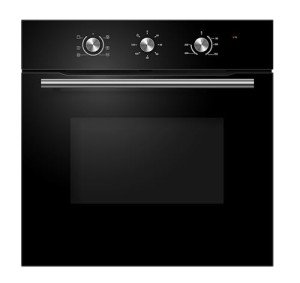The Comprehensive Guide to Built-In Ovens
Intro
Built-in ovens are a staple in modern cooking areas, integrating elegance with functionality. They offer a streamlined aesthetic and effective cooking abilities, making them a favored option for house owners and culinary enthusiasts alike. This article dives into the advantages of built-in ovens, their different types, crucial features to think about, setup suggestions, and upkeep recommendations, together with regularly asked questions.
Benefits of Built-In Ovens
Built-in ovens included a selection of benefits that add to their popularity. Here are some essential advantages:
- Space-Saving Design: Built-in ovens are designed to fit flawlessly into cabinets, permitting for a more organized and space-efficient kitchen layout.
- Visual Appeal: They offer a streamlined and modern-day look that can boost the overall design of the kitchen.
- Enhanced Functionality: Built-in ovens typically include innovative functions and technologies that support different cooking approaches.
- Enhanced Cooking Experience: Many built-in designs consist of self-cleaning functions, temperature level probes, and programmable settings, improving the cooking experience.
- Increased Property Value: A well-designed kitchen with built-in appliances can improve the worth of a home.
Types of Built-In Ovens
Built-in ovens come in numerous types, each developed to fulfill numerous cooking choices and requirements. Here are the primary types:
| Type of Built-In Oven | Description |
|---|---|
| Single Oven | A single, standalone oven for conventional baking and roasting. |
| Double Oven | Combines 2 ovens in one unit, permitting multiple meals to cook at various temperatures. |
| Wall Oven | Set up in the wall, maximizing counter space, ideal for little kitchen areas. |
| Convection Oven | Uses fans to circulate hot air for even cooking, boosting the results of baked goods. |
| Steam Oven | Utilizes steam for much healthier cooking alternatives, maintaining nutrients in food. |
Secret Features to Consider
When selecting a built-in oven, a number of functions can affect efficiency and functionality. Here are some necessary features to bear in mind:
Cooking Modes
- Bake: Traditional baking with bottom heat.
- Broil: Top heat cooking suitable for browning and crisping.
- Convection: Circulates hot air for even cooking.
- Steam: Uses steam for healthier cooking alternatives.
Size and Capacity
- Requirement sizes generally range from 24 to 30 inches broad.
- Consider the internal capability-- it can range from 3 to 6 cubic feet, permitting various meal sizes.
Controls and Smart Features
- Touchscreen Controls: Easy shows and adjustments.
- Smart Technology: Connectivity functions enable remote tracking and control via mobile phone applications.
Energy Efficiency
- Look for models with ENERGY STAR scores, showing lower energy intake.
Safety Features
- Features like auto shut-off and child locks improve security throughout operation.
Installation Tips
Installing a built-in oven may require professional assistance, however here are some basic pointers to keep in mind:
- Choose the Right Location: Ensure there's adequate area in your cabinets for installation, keeping in mind ventilation requirements.
- Electrical Requirements: Check that your kitchen's wiring fulfills the oven's power requirements, especially for electric models.
- Level the Oven: Ensure the oven is level to promote even cooking.
- Protect the Oven: Attach it strongly to the cabinetry to avoid movement during use.
Maintenance Advice
Regular maintenance is essential for the durability and effectiveness of a built-in oven. Here's how to keep it in top shape:
- Regular Cleaning: Wipe down surfaces after each use and carry out deep cleansing occasionally.
- Examine Seals: Inspect door seals for wear and guarantee they maintain an airtight fit to enhance energy effectiveness.
- Calibrate Temperature: If food regularly comes out overcooked or undercooked, think about recalibrating the oven's temperature level settings.
- Expert Servicing: Schedule annual check-ups with a skilled professional to preserve optimum efficiency.
FAQs
What is the distinction in between a built-in oven and a freestanding oven?
Built-in ovens are developed to be installed within cabinets, providing a smooth look. On the other hand, freestanding ovens are standalone systems that normally come with their own cooktop.
Are built-in ovens more pricey than freestanding designs?
Generally, built-in ovens can be more pricey due to the included installation costs and advanced functions. Nevertheless, rates differ extensively based upon brand, size, and performances.
Can I set up a built-in oven myself?
While it is possible to install a built-in oven yourself, it is suggested to hire an expert to ensure proper setup, especially if adjustments to kitchen cabinetry or electrical work are required.
How frequently should I clean my built-in oven?
It is recommended to clean your built-in oven routinely after heavy use. For deeper cleansings, make use of the self-cleaning function if readily available or regularly carry out manual cleaning to avoid build-up.
Built-in ovens are an important addition to any kitchen, offering both aesthetic appeal and advanced cooking abilities. By comprehending built-in oven and induction hob package , functions, installation, and maintenance requirements, property owners can make informed choices that boost their cooking experience and improve the general value of their homes. As kitchen designs continue to evolve, built-in ovens will likely stay a prominent choice for modern-day homes.

